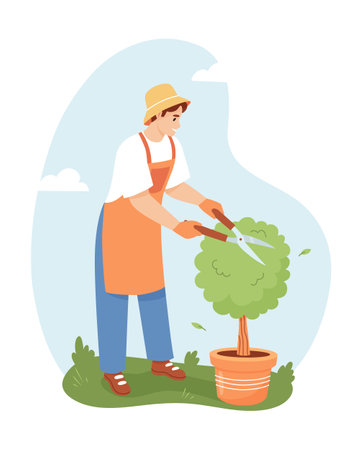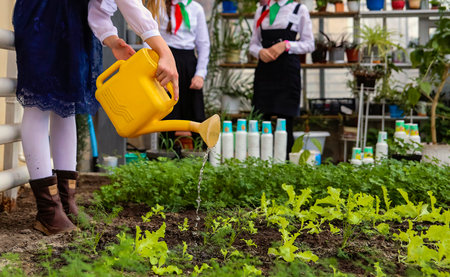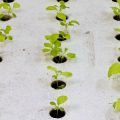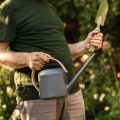1. Understanding Your Local Climate and Soil Conditions
When it comes to watering raised garden beds, theres no one-size-fits-all approach. Different regions in the U.S. have unique climates and soil types that directly influence how often and how much you should irrigate your garden. Understanding these local factors is the first step toward creating an efficient irrigation plan.
How U.S. Climate Zones Affect Irrigation
The United States spans a wide range of climate zones—from arid deserts in the Southwest to humid regions in the Southeast, and cooler temperate areas in the North. These variations mean that gardeners need to tailor their irrigation strategies based on where they live.
| U.S. Region | Typical Climate | Irrigation Considerations |
|---|---|---|
| Southwest (e.g., Arizona, Nevada) | Hot and dry with minimal rainfall | Frequent watering; consider drip irrigation to reduce evaporation |
| Southeast (e.g., Florida, Georgia) | Hot and humid with heavy summer rains | Watch for overwatering; rain sensors can help manage irrigation timing |
| Northeast (e.g., New York, Massachusetts) | Moderate rainfall with cold winters | Seasonal watering; adjust frequency during spring and fall |
| Pacific Northwest (e.g., Oregon, Washington) | Mild temperatures with consistent rain | Irrigation may be minimal during rainy months; monitor soil moisture levels |
| Midwest (e.g., Illinois, Ohio) | Variable weather with hot summers and cold winters | Flexible scheduling; use mulch to retain moisture during heatwaves |
The Role of Soil Composition in Raised Beds
The type of soil you use in your raised bed also plays a big role in how water is absorbed and retained. Most raised beds are filled with a mix of topsoil, compost, and other organic materials, which tends to drain faster than native ground soil.
Common Soil Types and Their Water Behavior:
| Soil Type | Description | Irrigation Tips |
|---|---|---|
| Sandy Soil | Lighter texture, drains quickly, dries out fast | Water more frequently but in smaller amounts |
| Loamy Soil | Balanced mix of sand, silt, and clay; ideal for most plants | Consistent moisture retention; moderate watering schedule |
| Clay Soil | Dense and slow-draining, holds water longer | Avoid overwatering; ensure good drainage in raised beds |
Tip:
If youre not sure about your local climate zone or soil type, check with your local Cooperative Extension office or use online tools like the USDA Plant Hardiness Zone Map.
By understanding your region’s climate patterns and the specific characteristics of your raised bed soil, you can make smarter choices about when and how to water—helping your garden thrive while conserving water.
2. Choosing the Right Irrigation Method
When it comes to watering raised garden beds in the U.S., selecting the right irrigation method is essential for healthy plants and efficient water use. Different systems work better depending on your garden’s size, location, and the types of crops you’re growing. Let’s take a closer look at some of the most popular options.
Drip Irrigation
Drip irrigation delivers water directly to the base of each plant through a network of tubing and emitters. This system is excellent for conserving water and minimizing evaporation, especially in hot or dry climates.
Benefits:
- Highly efficient water usage
- Reduces weed growth by targeting only plant roots
- Great for vegetable gardens and larger raised beds
Considerations:
- Initial setup can be time-consuming
- Tubing may need seasonal maintenance
Soaker Hoses
Soaker hoses are porous hoses that allow water to seep out slowly along their length. They are laid across the soil surface or buried under mulch and are ideal for even, slow watering across rows of plants.
Benefits:
- Easy to install and use
- Good coverage for small to medium-sized beds
- Affordable option for home gardeners
Considerations:
- May not distribute water evenly over long distances
- Less precise than drip systems
Manual Watering (Hand Watering)
This traditional method uses a hose or watering can to deliver water directly to the plants. It allows you to monitor each plant’s needs closely, but it can be time-consuming for larger gardens.
Benefits:
- Inexpensive and easy to start with
- You control exactly where and how much water is applied
- No need for complex equipment or installation
Considerations:
- Takes more time and effort, especially during hot months
- Difficult to maintain consistency if done irregularly
Irrigation Method Comparison Chart
| Irrigation Method | Best For | Main Pros | Main Cons |
|---|---|---|---|
| Drip Irrigation | Larger beds, vegetable gardens, dry climates | Water-efficient, reduces weeds, precise watering | Higher setup cost, requires maintenance |
| Soaker Hose | Small to medium-sized beds, flower beds | Easy setup, affordable, good coverage | Uneven distribution over long distances, less precision |
| manual Watering | Tiny gardens, container beds, beginners | Low cost, full control, no equipment needed | Time-consuming, inconsistent if not monitored regularly |
The best irrigation method depends on your specific garden needs. Think about your bed size, crop types, and how much time youre able to spend maintaining your system. Matching the right method with your gardens setup will help ensure healthier plants and less water waste.

3. Timing and Frequency of Watering
Getting the timing and frequency right is key to keeping your raised garden beds healthy while avoiding water waste. Depending on the season, weather, and plant growth stage, how often and when you water can make a big difference.
Best Time of Day to Water
Early morning is generally the best time to water your raised beds. This allows moisture to soak in before the sun gets too hot, reducing evaporation and giving plants time to absorb water before the heat of the day. Watering in the evening can work too, especially during hot summer months, but avoid doing it too late to prevent fungal growth from overnight dampness.
Watering Time Tips:
- Morning (5 AM – 9 AM): Ideal for most climates
- Evening (6 PM – 8 PM): Acceptable if mornings aren’t possible, but be cautious of over-watering or soggy soil
How Often Should You Water?
The frequency of watering depends on several factors like weather conditions, soil type, and what youre growing. Raised beds tend to dry out faster than in-ground gardens, so they usually need more frequent watering.
| Season | Watering Frequency | Notes |
|---|---|---|
| Spring | 2-3 times per week | Soil still retains some moisture from winter; monitor rainfall |
| Summer | Daily or every other day | Hot temps and fast evaporation mean more frequent watering is needed |
| Fall | 1-2 times per week | Cooler weather reduces evaporation; adjust based on rainfall |
| Winter (in warm regions) | As needed | If planting cool-season crops, check soil moisture weekly |
Consider Plant Growth Stages
Your plants’ water needs change as they grow. Seedlings have shallow roots and need consistent moisture close to the surface. Mature plants can handle deeper but less frequent watering.
| Growth Stage | Watering Needs |
|---|---|
| Seedlings | Light, frequent watering to keep topsoil moist daily or every other day |
| Established Plants | Deep watering 2–3 times per week encourages root growth |
| Fruiting/Flowering Stage | Slightly increased watering helps support fruit and flower development; avoid letting soil completely dry out between watering sessions |
A Quick Soil Check Tip:
Stick your finger into the soil about 2 inches deep. If it feels dry at that depth, it’s time to water. Using a moisture meter is also a handy tool for consistent checks.
4. Water Conservation Tips for Eco-Friendly Gardening
When it comes to irrigating raised garden beds in the U.S., conserving water is not just good for your wallet—its also great for the environment. Here are some simple and sustainable practices that can help you reduce water waste while keeping your garden healthy and thriving.
Mulching: Lock in Moisture
Mulch acts like a protective blanket over your soil. It helps slow down evaporation, keeps the soil cool, and even suppresses weeds that compete for water. Organic mulches like straw, wood chips, or shredded leaves are excellent choices for raised beds.
Benefits of Mulching
| Type of Mulch | Water-Saving Benefit |
|---|---|
| Straw | Lightweight and excellent at retaining moisture |
| Wood Chips | Long-lasting and good for temperature control |
| Shredded Leaves | Free and enriches soil as it breaks down |
Harvest Rainwater: Free and Sustainable
Installing a rain barrel system is a smart way to collect free water from your roof. Use this collected rainwater to irrigate your raised beds, especially during dry spells. Just make sure the system is covered to keep out debris and mosquitoes.
Design Your Beds Wisely
A well-designed raised bed can improve water efficiency significantly. Keep the following tips in mind:
Smart Bed Design Tips
- Avoid Overcrowding: Give plants enough space so roots aren’t competing too much for water.
- Use Quality Soil: A mix with compost improves water retention and drainage.
- Shape Matters: Slightly mounded or domed beds allow better runoff control and prevent pooling.
By combining these eco-friendly techniques—mulching, harvesting rainwater, and smart design—you’ll create a more sustainable garden that uses less water without sacrificing plant health.
5. Troubleshooting Common Irrigation Issues
Even with a well-designed irrigation system, raised garden beds can sometimes run into problems that affect plant health and water efficiency. Knowing how to identify and fix common issues like uneven watering, clogged emitters, and signs of overwatering can help you keep your garden thriving.
Uneven Watering
If some plants look dry while others are thriving, you might be dealing with uneven watering. This often happens when water pressure isn’t distributed evenly or emitters are spaced too far apart.
How to Fix It:
- Check water pressure at the source and ensure its within the recommended range for your irrigation system.
- Inspect tubing for kinks or damage that could restrict flow.
- Add more emitters or reposition existing ones to cover all areas of the bed evenly.
Clogged Emitters
Clogged emitters are a common issue, especially if youre using well water or have hard water in your area. When emitters are blocked, parts of your garden may not receive enough water.
Signs of Clogged Emitters:
- Dry spots in the soil near certain plants
- Reduced or no water flow from specific emitters
How to Fix It:
- Remove the emitter and flush it with clean water.
- Soak clogged emitters in vinegar overnight to dissolve mineral buildup.
- Install a filter at the beginning of your irrigation line to prevent future clogs.
Overwatering Symptoms
Too much water can be just as harmful as too little. Overwatering can lead to root rot, mold growth, and nutrient leaching—all of which can stunt plant growth or kill your crops.
Common Signs of Overwatering:
| Symptom | Description |
|---|---|
| Yellowing Leaves | Leaves turn yellow and feel soft or mushy due to excess moisture. |
| Mold or Algae on Soil Surface | A sign that the soil is staying too wet for too long. |
| Soggy Soil | The soil feels wet even hours after watering; roots may begin to decay. |
How to Fix It:
- Reduce watering frequency and monitor soil moisture with a meter or by hand-checking.
- Improve drainage by adding organic matter or adjusting the soil mix.
- Use a timer with moisture sensors to avoid unnecessary watering cycles.
Troubleshooting these common irrigation issues will not only improve your plants’ health but also make your raised bed garden more efficient and sustainable throughout the growing season.


